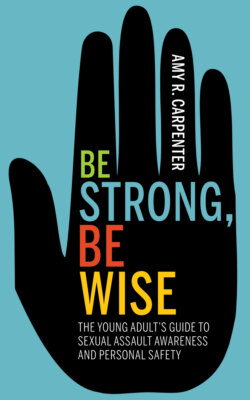Читать книгу Be Strong, Be Wise - Amy R. Carpenter - Страница 8
На сайте Литреса книга снята с продажи.
Оглавление| Author’s Note: How to Approach This Book |
Since more readers mean more people using safety measures, I knew if I came across as boring in writing this book, I’d lose those who might be on the fence about reading a sexual safety guide. So, my goals were in conflict. How could I inform the reader without boring them? How could I help them integrate the tools without sounding like a textbook or manual? In the end, I decided to go with my gut and trust that the average eighteen-plus-year-old person is able to grasp several concepts simultaneously, as well as apply them to their own life (albeit, with some help.) In this way, I deliver the material as directly as possible, giving the reader all the information they need to know without using a lot of unnecessary descriptions or clinical mumbo-jumbo. Also, the topic is not a light one, but there is a way of talking about it in a light manner.
Chapters 1 through 3 set the backdrop, providing information to readers of any age, but by Chapter 4, the narrative voice changes and is directed solely to young adults. In conversational style, I address the reader as “you” through the remainder of the book.
To write about the experience of the average young person when it comes to intimate relationships is like trying to identify a favorite movie, which is to say, impossible. In Chapter 7, when I discuss sex and dating, I opted for minor graphic descriptions to get the necessary points across. There are readers who may find these too graphic or, conversely, too innocent. If the tools are accessible, it does not matter. Additionally, the accounts of sexual assault are written sparsely for the most part. This is out of respect for the contributors’ stories. They are not mine, and certain details aren’t necessary to a discussion on safety. In order to ensure privacy, all the contributors’ names have been changed.
The questions at the end of each chapter help integrate the information and make it more usable, which means the wisdom available is determined by what the reader brings to it.
Lastly, since women are far more likely to be victims of assault, I discuss sexism as a primary risk force, along with homophobia and transphobia. That said, the guidelines here are written for both men and women. The pronouns “he/she” are used primarily throughout the book, and when discussing the gender-fluid community, the pronoun “they” is used exclusively.
